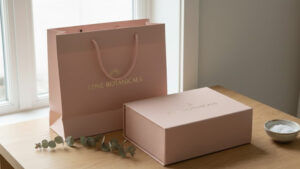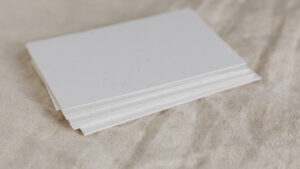Last Updated on September 15, 2023 by Packoi Team
To help you run a sustainable beauty brand, this article will provide a guide to eco-friendly packaging by looking at the five best packaging materials for cosmetics packaging. This will also include a guide for choosing the best materials for your cosmetic packaging solutions.
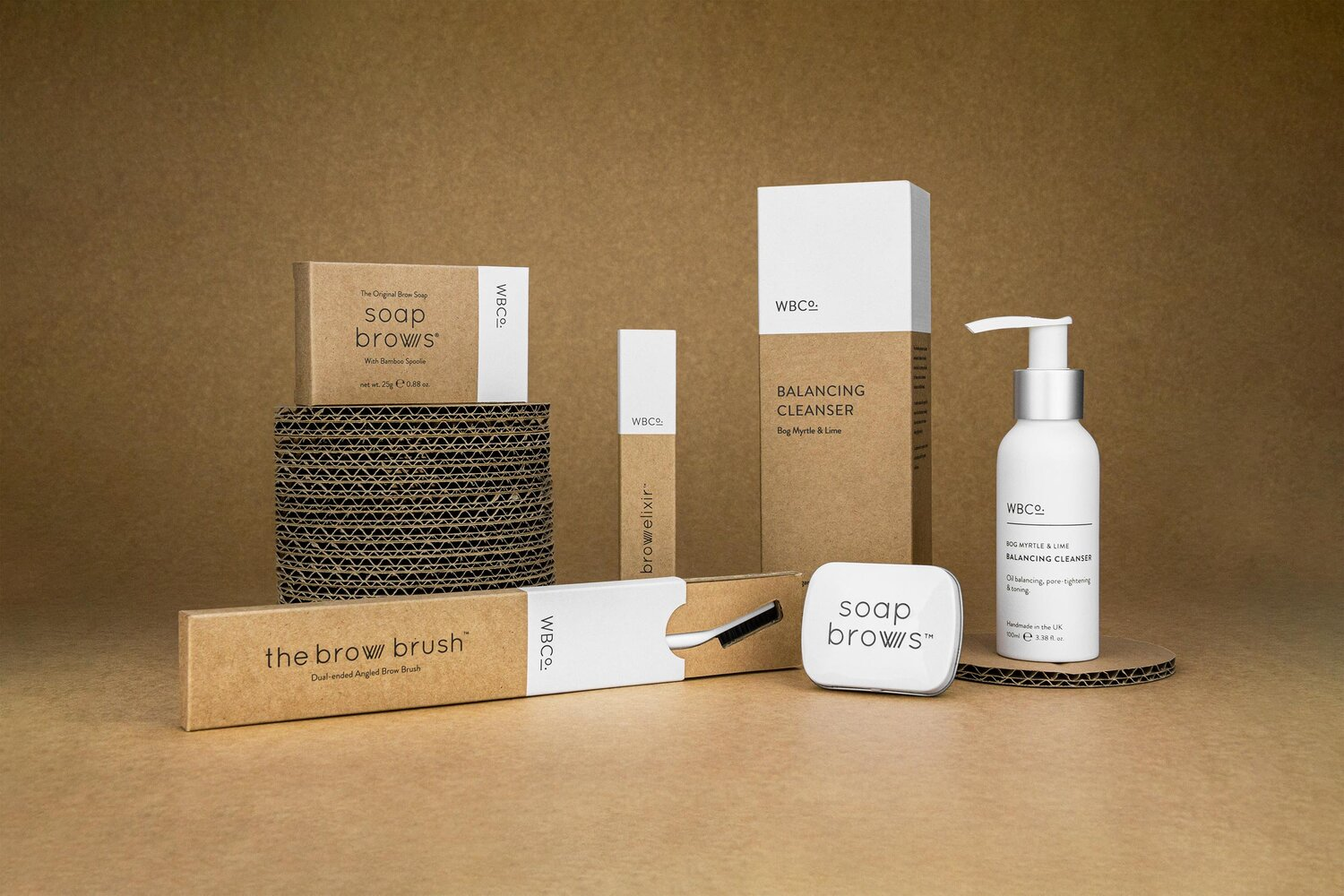
Diverse Options Available for Cosmetic Packaging
There is a wide range of packaging materials for cosmetic packaging. But because beauty products come in various forms—liquid, powder, pastes, and sometimes gas, the materials are also suited differently to limited forms of cosmetics.
The packaging materials available to beauty brands include glass, paper, plastic, metal, and shrink wrap. With these options available, you can have a sustainable packaging solution for your cosmetic brand.
Material 1: Paper Packaging
Usage of Paper-Based Packaging Materials in the Beauty Industry
For many years, paper has been used for packaging as a substitute for other unsustainable options. The most common paper packaging is paper filler. Paper fillers are made from cardboard or recycled paper. Also, paper-based cosmetic bottles and cardboard boxes are available.
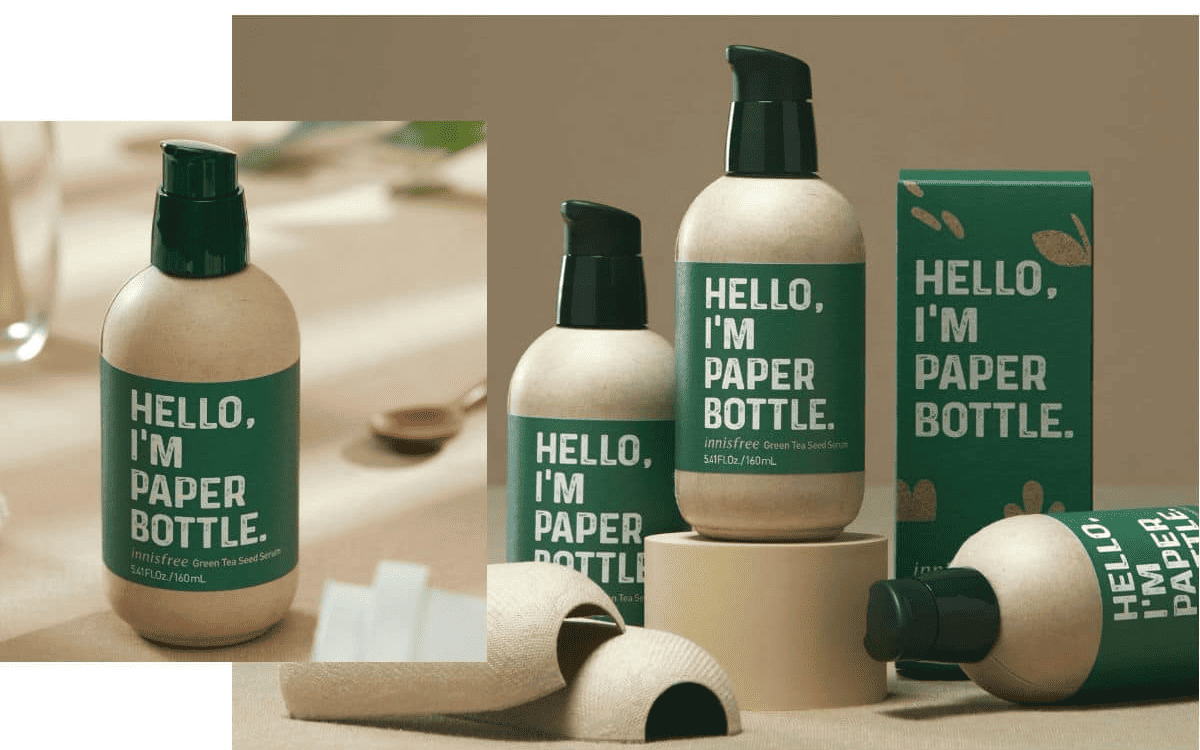
Features of Paper Packaging
- FSC-certified paper: This implies the packaging is made from responsibly sourced wood. The Forest Stewardship Council (FSC) promotes sustainable forest management by giving certification to forest products for use in the market.
- Sustainable: Paper packaging is recyclable packaging that can be recreated into something else and reused for another purpose. In short, it is eco-friendly packaging for beauty products.
- Refillable: Most paper packaging is refillable. This means they can significantly reduce waste.
- Biodegradable packaging is plant-based, once the paper packaging is disposed of, it decomposes.
Because paper packaging is biodegradable, refillable, and recyclable, adopting it in the cosmetic industry can significantly lead to zero environmental waste.
Material 2: Glass Packaging
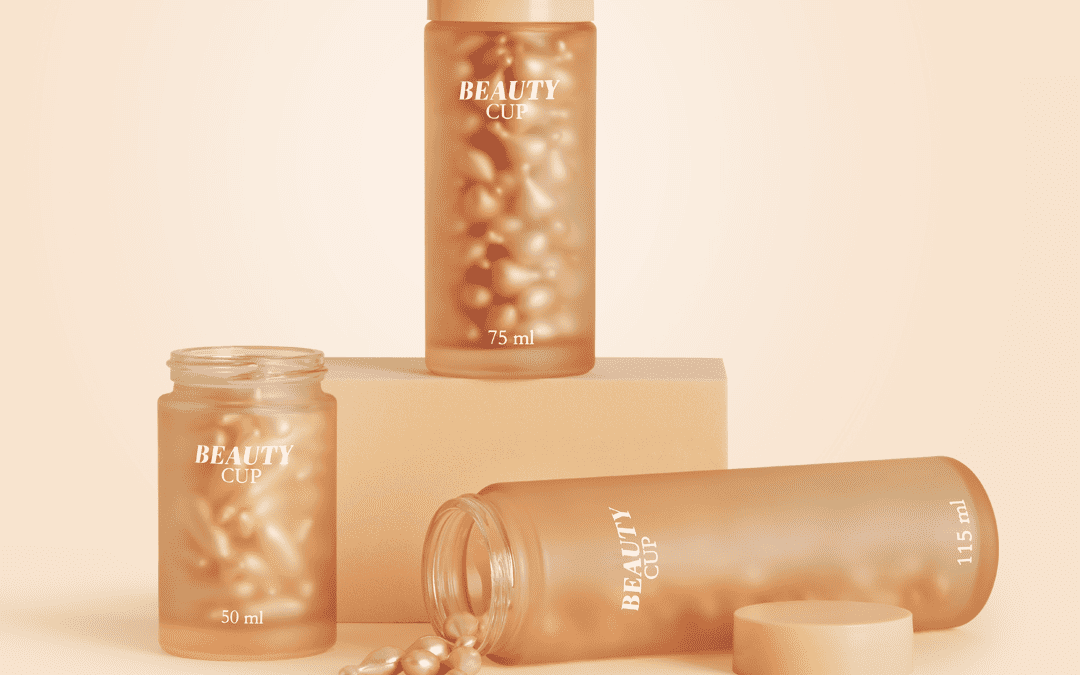
Glass containers are especially excellent options for expensive cosmetic products. Glass packaging has a premium, attractive, crystalline appearance. It is available in shades of transparent, frosted, and tinted finishes. This kind of packaging is ideal for skincare products, essential oils, personal care products, perfumes, and fragrances.
Glass packaging can be used for almost all products since it is chemically inert. Pure essential oils interact with rubber and plastic, so they are stored in glass bottles where their quality is not compromised.
But because of its fragility, glass is always enclosed in multiple layers of bubble wrap during shipping to prevent breaking.
Benefits of Glass Packaging
Besides its chemical inertness, glass has a number of benefits as a packaging solution for beauty products.
- Durability: glass is durable and does not wear out over many years of use.
- Recyclability: glass is recyclable and can be recycled many times without losing its quality and integrity. For this reason, glass is a sustainable packaging material.
Innovative Designs and Customization Options
Cosmetics companies are looking for innovative and customized glass packaging for their cosmetics to stand out in the market. Some of the innovative glass cosmetic packaging solutions include custom-shaped glass bottles, glass jars, colored glass containers, and metallic finishes. Also, small and travel-friendly packaging is coming up for more convenience.
Material 3: Plastic Packaging

Despite its environmental concerns, plastic is widely used in the packaging industry thanks to its flexibility and cost-effectiveness. There is a wide range of plastic cosmetic packaging, which is attributed to its low cost and convenience with most products.
Advantages
- Durability: It is a strong and durable option.
- Refillable: It is an ideal choice for manufacturing refillable packaging. Plastic bottles can be refilled with cosmetics and reused.
- Flexibility and lightweight: It is a flexible and lightweight material. Its cosmetic packaging is unlikely to break easily due to its flexibility.
- Recyclability: Most plastics used for cosmetic packaging are made of polyethylene terephthalate (PET) that can be recycled, repurposed, and reused. Plastic bottles and other forms of plastic cosmetic packaging can be collected and taken to a recycling facility to produce post-consumer recycled items.
- Versatility: It can be used to manufacture different types of cosmetic containers: bottles, jars, vials, and tubes.
Challenges
- Plastic waste: Plastic is the leading contributor to waste worldwide. This is not an eco-friendly beauty packaging option since its waste causes a detrimental impact on the environment.
- Essential oils tend to interact with plastic, which may affect the product’s quality, and pose safety risks. Therefore, it is limited to some products in the beauty industry.
Sustainable Practices for Using Plastic Packaging
An eco-friendly approach is essential to reducing plastics’ harmful environmental impact. It is possible to continue using it for cosmetic packaging more sustainably. We can achieve environmental sustainability by reducing, recycling, and reusing plastic packaging. Also, bioplastics have enhanced biodegradability while producing fewer harmful substances for the environment than ordinary plastics.
Balancing Functionality and Environmental Impact on Plastic Packaging Choices
Plastic packaging tends to work well with most cosmetics. However, single-use plastics have dominated the market and are the major source of solid waste. The best way to deal with this environmental issue without compromising functionality is to reduce the use of plastic containers and look for other sustainable alternatives like cardboard and paper packaging. Paper and plastic packaging have their own characteristics and can be combined. Also, recycling and reusing those packaging solutions is key to achieving a balance between performance and eco-friendliness.
Material 4: Metal Packaging
For a sleek, elegant, and premium appearance, cosmetics companies use product packaging made of metal. Aluminum and tinplate are the most common metals used in beauty packaging. These metals can be printed for more appealing packaging.
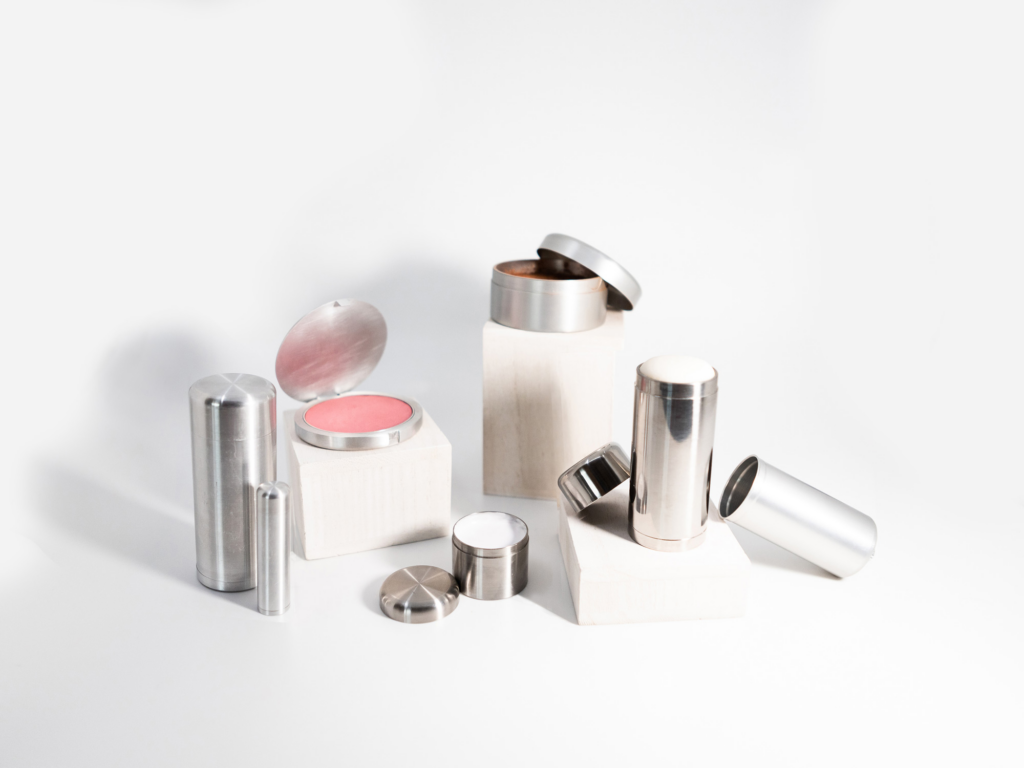
Exploring the Use of Metal Packaging for Cosmetics
Metal packaging is often made of aluminum or tin because they are eco-friendly and non-toxic to most cosmetics.
Aluminum packaging is especially ideal for dry, powdered products. Also, you can have metal bottles for deodorant spray bottles.
Benefits of Metal Packaging
- Customizable: Aluminum can be easily molded into any desired shape. Also, metal containers come in the form of soap tins, lip balm tins, metal bottles, metal jars, squeezable aluminum tubes, and other refillable containers.
- Compatibility: Aluminum and tin are compatible with many cosmetics.
- Durable: metal packaging made of aluminum is sturdy and less fragile. It can endure tough shipping conditions.
- Recyclability: Aluminum and tin are highly recyclable. They can be easily recycled and reused for another important purpose.
- Product protection: Resistant to temperature changes, airtight, and strong to protect your products from externalities.
Material 5: Shrink Wrap Packaging
Shrink wrap packaging involves two main things; the right kind of plastic film and heat. Shrink wrap is a PVC or polyolefin film that is used to wrap around an object or bundled merchandise, irrespective of its shape or size. When heat is applied to the surface, it tightly shrinks to conform to the shape of the wrapped product, creating tight-fitting, sealed packaging. Shrink wrap provides outer packaging for individual products or bundles of goods, especially during shipment. The most common materials for shrink-wrap packaging in the cosmetics industry are PVC and polyolefin.

Benefits of Shrink Wrap
Shrinkwrapping comes with a wide range of benefits:
- Protection: The shrink wrap creates a tight seal that protects against dust, moisture, or dirt damage. Some shrink-wrap materials are resistant to UV rays, protecting your products when exposed to the sun.
- Tamper proofing: Since the shrink wrap seals and tightly conforms to the product’s shape, tempering with it will be noticed immediately. So, companies use shrink-wrap packaging to ensure products are delivered with the required diligence.
- Durability: Shrink wraps are made of strong, durable materials, making tearing or puncturing easily under physical impact difficult.
- Maximizing space: Shrink-wrap packaging keeps items closer together, even without boxes. This means it is a cost-effective option to reduce storage and transport costs.
- Branding: Shrink wraps are used to enhance marketing claims by allowing the printing of brand logos, colors, and pictures.
Considerations for Using Shrink Wrap
Shrink wrap film is fully recyclable, which can significantly achieve zero environmental waste. More sustainable materials like polyethylene from sugar cane are coming up in place of plastic.
How to Select Packaging Material with Environmental Goals
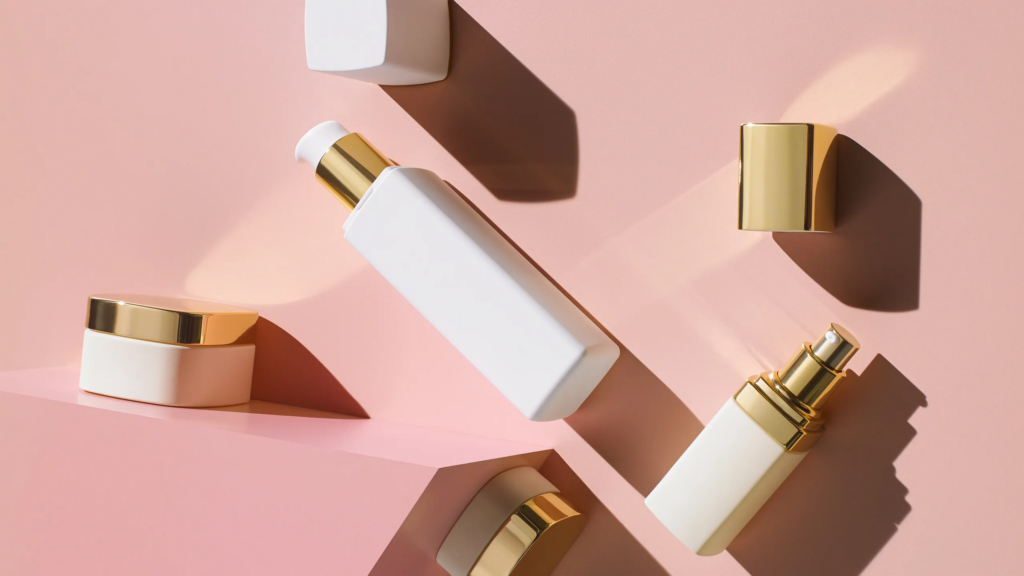
To reduce your environmental footprint, you need a sustainable packaging option that will also serve your business values. Here are key factors to look into sustainable packaging options:
- Different kinds of cosmetic products and materials come in various forms; liquids, gels, solids, sprays, and powders. Different materials also offer varied effectiveness with each personal care product. Compare the effectiveness of various packaging materials to find the right one for your business. Glass, plastics, paper or cardboard, metals, and shrink wrap come with different aesthetics, durability, and functionality and are used differently depending on the kind of product handled. Some products have compatibility issues with some materials due to negative reactions to the packaging. To avoid reformulating your products, get the right packaging solutions for your line of products.
- For sustainability, you must align your choice of material(s) with environmental goals and business values. First, you need sustainable packaging that can easily be recycled into other novel items. However, it is important to know that the materials have different degrees of recyclability. Renewable materials are crucial in the packaging industry to ensure our environment remains plastic-free. Biodegradable packaging made of biodegradable materials like paper is critical to running an eco-friendly packaging strategy within your business. The biodegradable container, once disposed of, decomposes into soil nutrients. Cosmetic companies have proven refillable packaging is among the most sustainable packaging solutions; by refilling empty cosmetic bottles, you reduce solid waste in the environment.
Conclusion
Packaging in the cosmetics industry is crucial for handling products throughout the supply chain. Today, brands across various industries seek eco-friendly packaging materials to make their products more sustainable, and the cosmetics industry is no exception. Various materials are used for packaging in the beauty line; glass, paper, plastics, and metals, each with distinct features and functionality. By comparing their functionality with your products and aligning them with your sustainability goals, you can get the right materials for your needs.
Sustainable Packaging Solutions with Packoi
Your beauty products need to stand out among your competitors. At Packoi, we offer high-quality packaging designs and printing to help your products have a competitive advantage in the market. Get design services from Packoi at affordable rates. Contact us for more information.



